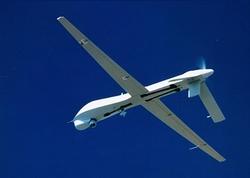Tue, May 06, 2003
Russians Stealing Fish; Coast Guard Has Just One Boat
At a hearing Thursday of the Senate Appropriations Committee's
Homeland Security Subcommittee, Senator Ted Stevens (R-AK)
expressed his concern to U.S. Coast Guard Commandant, Admiral
Thomas H. Collins over his agency's current patrol capabilities of
the North Pacific's Maritime Boundary Line. The Coast Guard
currently has one vessel patrolling this area.
 Stevens (right) argued that Alaska, with half the
coastline of the United States and with more than fifty percent of
the naturally-produced fish that Americans consume coming from its
waters, needs more than one cutter. He further noted the increase
in the amount of incursions of the Maritime Boundary Line recently
by several Russian pollock factory trawlers, which have utilized
coordinated incursions to gain access to valuable resources in U.S.
waters.
Stevens (right) argued that Alaska, with half the
coastline of the United States and with more than fifty percent of
the naturally-produced fish that Americans consume coming from its
waters, needs more than one cutter. He further noted the increase
in the amount of incursions of the Maritime Boundary Line recently
by several Russian pollock factory trawlers, which have utilized
coordinated incursions to gain access to valuable resources in U.S.
waters.
"There have been a significant number of incursions in the North
Pacific in the fishing grounds, with an increasing number of
foreign vessels coming across the Maritime Boundary Line, said
Stevens. "I am concerned about that and wonder if it isn't time to
look at some high-tech concepts to increase the surveillance and
decrease the potential for incursions."
 Stevens suggested that the Coast Guard look at the possibility
of using the Predator UAV to patrol the North Pacific's Maritime
Boundary and said he would ask the Committee to request that the
Coast Guard present a plan for the modernization of the
surveillance of these waters. [The Predator can also be armed with
a missile, making it a UCAV. A Predator, you may recall, was used
last year to take out CIA targets riding in a car, in Yemen
--ed.]
Stevens suggested that the Coast Guard look at the possibility
of using the Predator UAV to patrol the North Pacific's Maritime
Boundary and said he would ask the Committee to request that the
Coast Guard present a plan for the modernization of the
surveillance of these waters. [The Predator can also be armed with
a missile, making it a UCAV. A Predator, you may recall, was used
last year to take out CIA targets riding in a car, in Yemen
--ed.]
"I have suggested the use of Predators to patrol the boundary
line and to have onboard warning capabilities to warn foreign
vessels that they are entering U.S. waters. I hope the Committee
will support that concept and that we'll push towards having the
greatest use of new technology available in surveillance of the
maritime boundary, said Stevens. "In my judgement, the use of the
Predator's high technology will make up for the imbalance in terms
of assignment in your vessels. I urge you to get us a plan for
moving forward in that area and using that kind of technology. It
will not increase your manpower. It will not increase your cost
accept in terms of acquisition costs of new technology. The people
that operate the Predators could be sitting in San Diego and work
on the Predators that are over the waters of Alaska. It is an
entirely new concept of lifesaving and protection of our resource
that I think we've got to move into as rapidly as possible," said
Stevens.
More News
Aero Linx: Transport Canada We are a federal institution, leading the Transport Canada portfolio and working with our partners. Transport Canada is responsible for transportation p>[...]
Gross Navigation Error (GNE) A lateral deviation from a cleared track, normally in excess of 25 Nautical Miles (NM). More stringent standards (for example, 10NM in some parts of th>[...]
From AirVenture 2017 (YouTube Edition): Flight-Proven Booster On Display At AirVenture… EAA AirVenture Oshkosh is known primarily as a celebration of experimental and amateu>[...]
Aircraft Parachute System (CAPS) Was Deployed About 293 Ft Above Ground Level, Which Was Too Low To Allow For Full Deployment Of The Parachute System Analysis: The day before the a>[...]
Also: 48th Annual Air Race Classic, Hot Air Balloon Fire, FAA v Banning 100LL, Complete Remote Pilot The news Piper PA-18 Super Cub owners have been waiting for has finally arrived>[...]
 ANN's Daily Aero-Linx (06.29.25)
ANN's Daily Aero-Linx (06.29.25) ANN's Daily Aero-Term (06.29.25): Gross Navigation Error (GNE)
ANN's Daily Aero-Term (06.29.25): Gross Navigation Error (GNE) Classic Aero-TV: Anticipating Futurespace - Blue Origin Visits Airventure 2017
Classic Aero-TV: Anticipating Futurespace - Blue Origin Visits Airventure 2017 NTSB Final Report: Cirrus SR22
NTSB Final Report: Cirrus SR22 Airborne Affordable Flyers 06.26.25: PA18 Upgrades, Delta Force, Rhinebeck
Airborne Affordable Flyers 06.26.25: PA18 Upgrades, Delta Force, Rhinebeck




